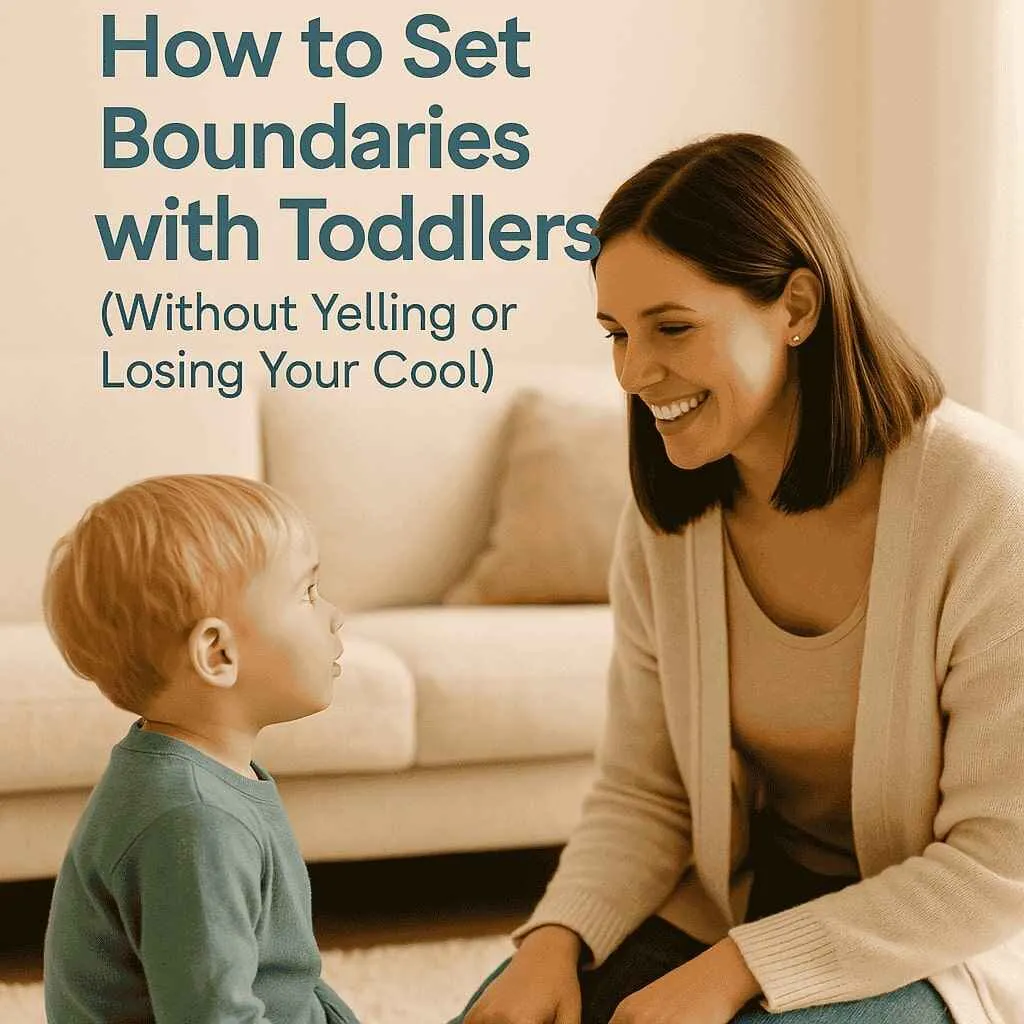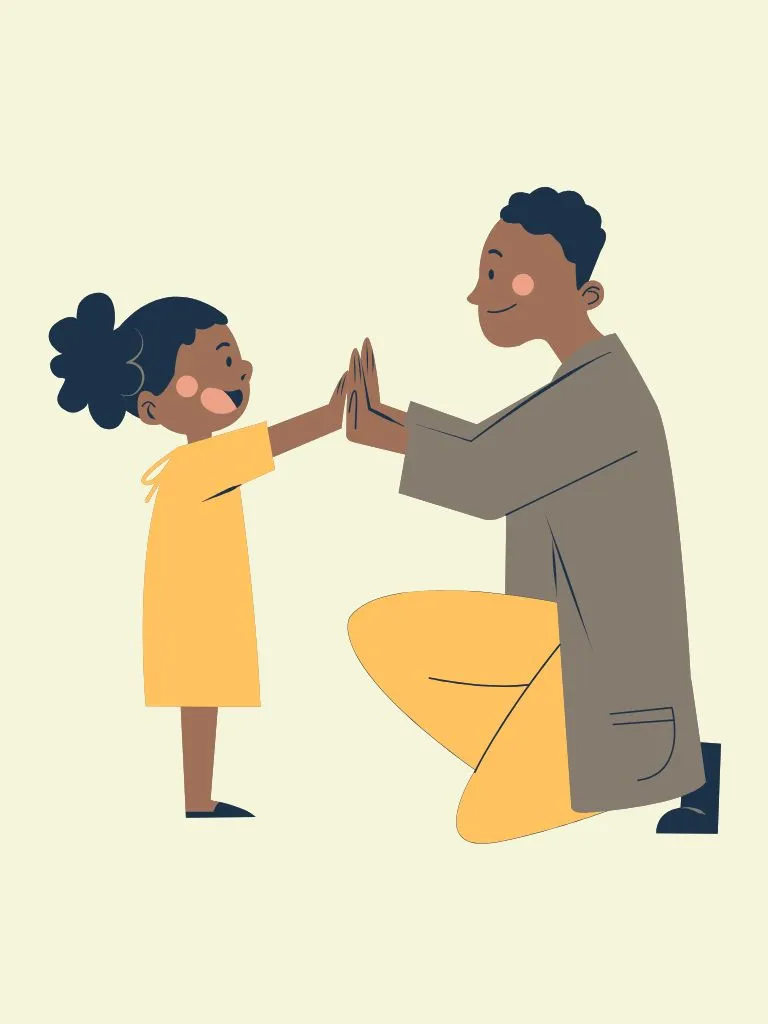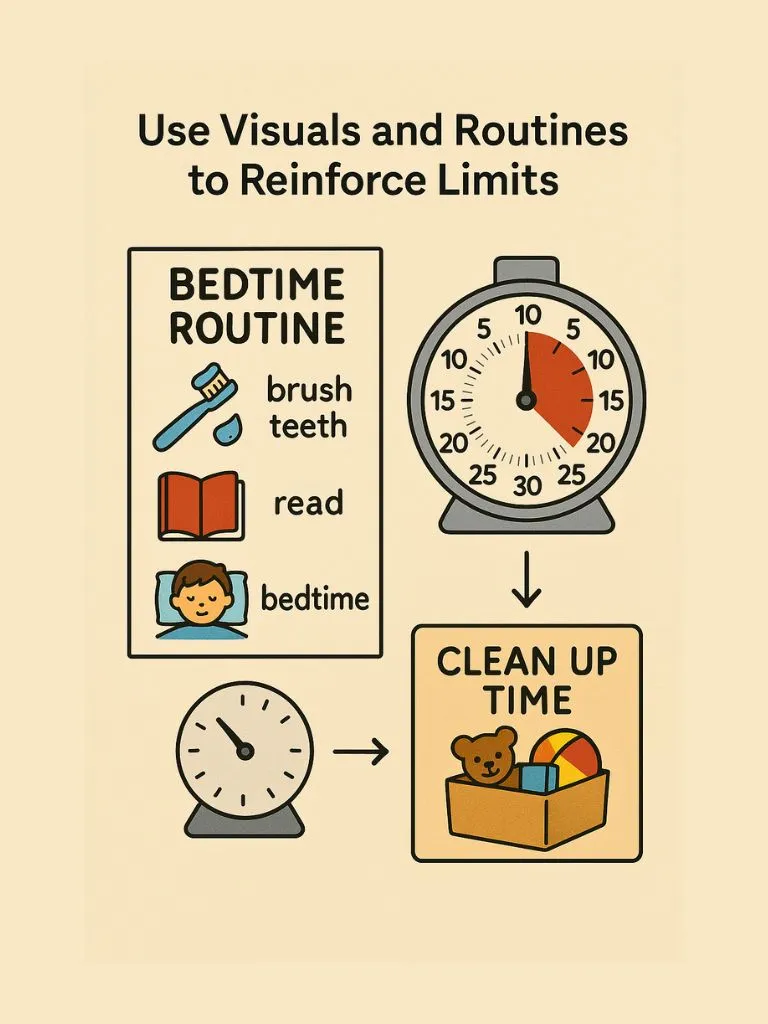If you’ve ever ended the day with your throat sore from yelling and your heart heavy with guilt, you’re not alone. I’ve been there too—more than I’d like to admit.
Toddlers know how to test limits. It’s their job, really. But knowing that doesn’t make the meltdowns, messes, or constant “No!” any easier to handle.
For the longest time, I thought setting boundaries meant I had to be loud or strict to be taken seriously. But the more I yelled, the worse things got—for my kids and for me. They tuned me out, and I felt like I was failing.
It took time (and a lot of trial and error), but I finally found a better way. One that still holds firm to boundaries—but does it with calm, consistency, and connection. Here’s exactly how I learned to set boundaries with my toddlers without yelling.
1. Shift Your Mindset: Boundaries Are Loving, Not Mean
I used to feel guilty about setting limits—like I was crushing their independence or being “too strict.” But the truth is, toddlers need boundaries to feel safe.
When they know what’s okay and what’s not, they feel secure—and that security leads to better behavior.
Now I remind myself: boundaries are a form of love. They don’t have to be delivered with anger. They just have to be clear and consistent.
2. Keep It Short, Simple, and Steady
Toddlers don’t respond well to lectures or complicated reasoning. When I need to enforce a boundary, I keep it short and direct:
- “We don’t hit. Hitting hurts.”
- “The iPad is done. It’s time to play.”
- “Snacks are after nap.”
Then I repeat it calmly. Even when they protest. Even when they scream. The fewer words I use, the better it lands.
The calmer I stay, the more likely they are to follow my lead.
3. Use a Calm, Confident Tone (Even If You’re Not Feeling It)
This was hard for me at first. I used to think yelling made me sound in control. But actually, it just sent the message that I wasn’t.
Now I use a firm, kind voice. Not cold, but not pleading either. When I sound sure of myself—even if I’m faking it a little—my toddlers seem to listen more.
Over time, it’s helped me become the calm anchor they need when their emotions feel too big to handle.
4. Anticipate Triggers and Set Boundaries Early
I started noticing patterns. Certain times of day—like right before dinner or during transitions—were always harder. So I began setting boundaries before the storm.
I might say, “In five minutes, we’re turning off the TV,” or “We’re going to leave the park after two more slides.” Giving a gentle warning—and then following through—helped my toddlers adjust without the shock of an abrupt “NO!”
5. Offer Two Choices Within the Boundary
I use this trick all the time. When I want to avoid a meltdown but still stick to the limit, I offer two acceptable choices:
- “You can wear the blue pajamas or the dinosaur ones.”
- “You can walk to the car or I can carry you.”
- “You can clean up the blocks or the books first.”
It gives them a sense of control without giving up the boundary. Win-win.
6. Get Down on Their Level—Literally
This is one of the simplest changes that made a huge difference for us. When I speak to my toddlers from across the room, they ignore me. But when I crouch down, make eye contact, and touch their arm gently, they listen.
It doesn’t always prevent pushback, but it definitely lowers the tension. They feel seen, and that connection softens their defenses.
7. Stay Consistent—Even When It’s Hard
Here’s the truth no one likes to hear (including me): the boundary only works if you hold it. That means following through, even when it’s inconvenient or exhausting.
If I say, “No more snacks after dinner,” and then give in because they beg—it teaches them that pushing works. But if I stay calm and firm? Eventually, they stop pushing.
It’s hard in the moment. But long-term? It makes parenting so much easier.
8. Connect First, Then Correct
Sometimes, a tantrum isn’t about the limit—it’s about feeling disconnected. I’ve learned to pause and offer a hug, a soft voice, or even just a few moments of undivided attention before I enforce a rule.
When my toddlers feel emotionally safe, they’re far more likely to accept boundaries—even when they don’t like them.
9. Use Visuals and Routines to Reinforce Limits
Toddlers are visual learners. I started using picture charts for our bedtime routine and simple visual timers for screen time. They’ve worked wonders.
When the timer goes off or the chart says it’s cleanup time, it’s not “Mom being mean.” It’s just what happens next. That takes some of the emotion out of the moment—and makes following rules less of a fight.
10. Repair After Rough Moments
Even when we do everything “right,” we’re human. Sometimes we still yell. Sometimes they still melt down. That’s okay.
What matters is what comes next. I always try to circle back after the chaos and say, “I didn’t like how I yelled earlier. I was feeling overwhelmed. I’m sorry.” Or, “You were really upset. Let’s talk about it.”
Those small moments of repair strengthen the relationship—and make the next boundary easier to hold.
Final Thoughts
You don’t have to yell to be heard. You don’t have to be harsh to be effective. Boundaries can be kind and firm at the same time—and when they are, they actually work better.
If you’re deep in the toddler trenches and wondering how to discipline without yelling, just know: you’re not failing. You’re learning. And every time you choose calm over chaos, connection over control, you’re building a stronger bond and raising a more emotionally secure child.
You’ve got this. And you’re not alone.










